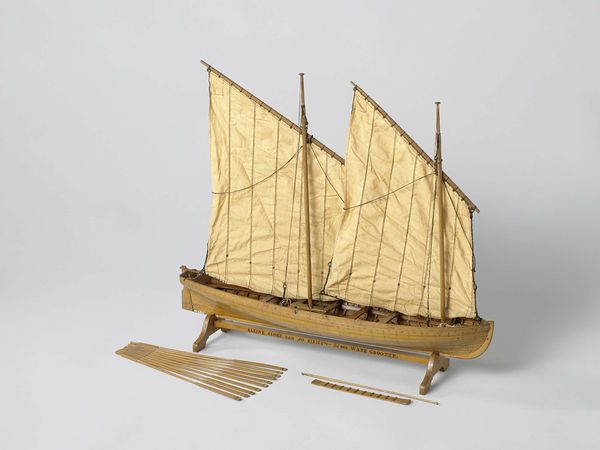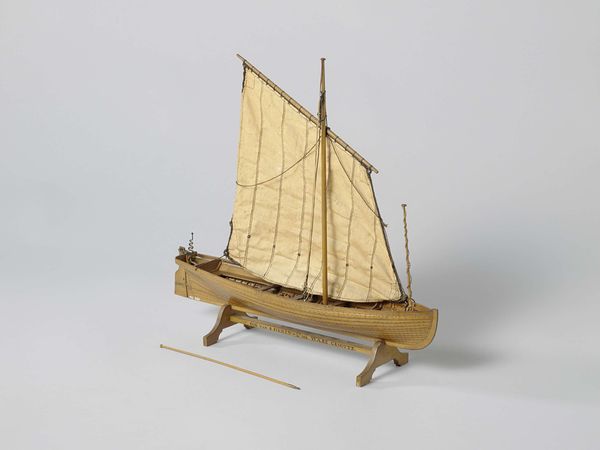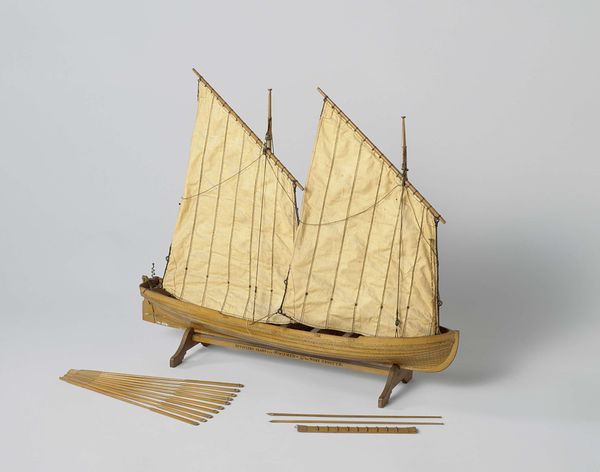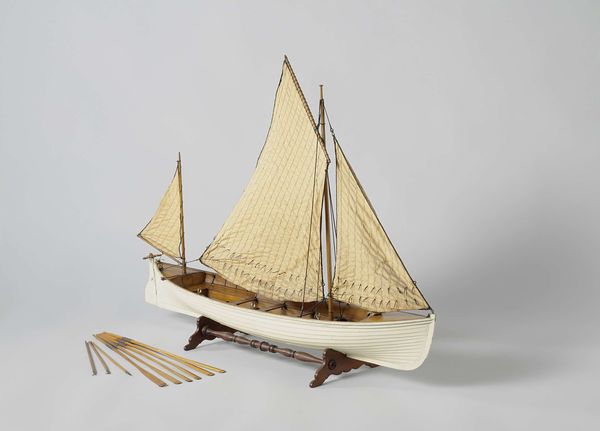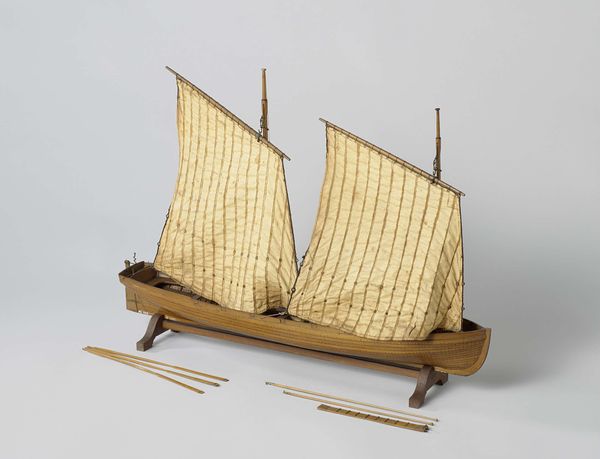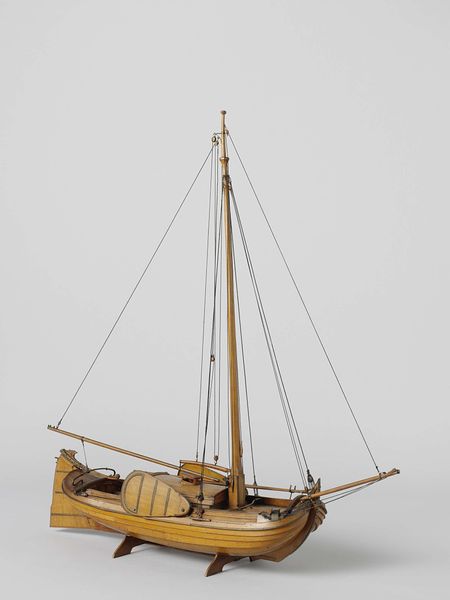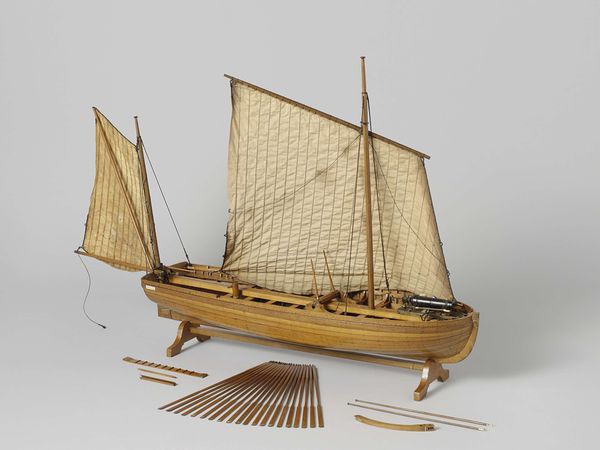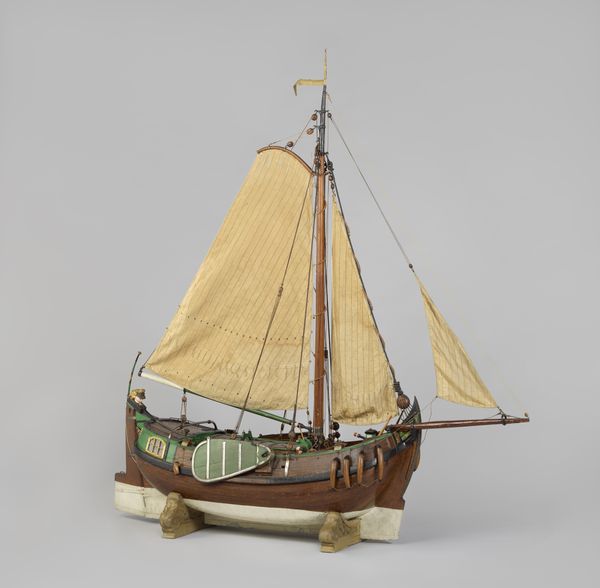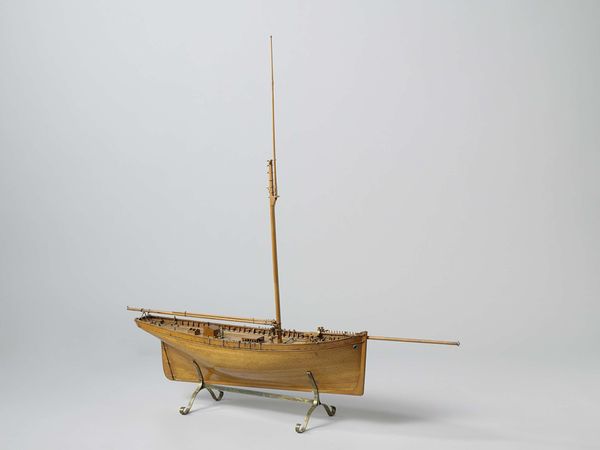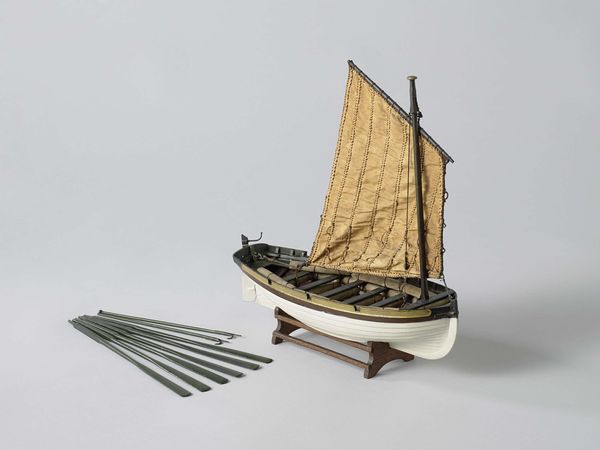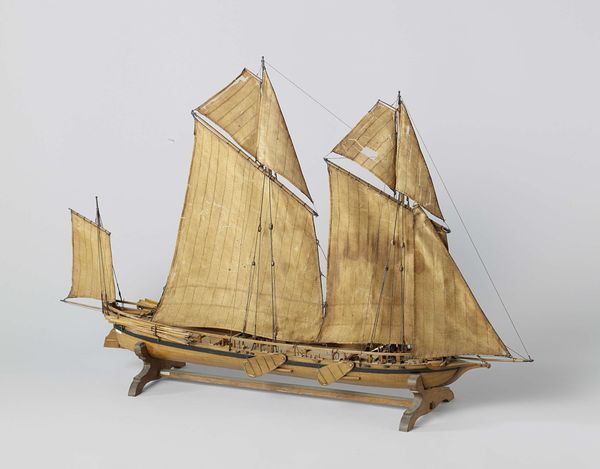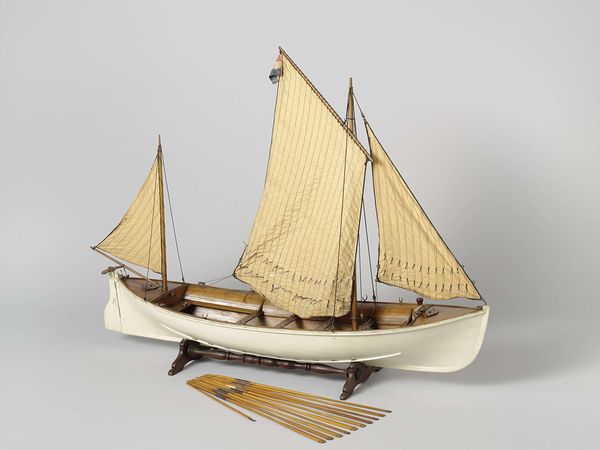
wood
#
landscape
#
architecture mock-up
#
wood
#
miniature
Dimensions: height 43 cm, length 61 cm, width 17 cm
Copyright: Rijks Museum: Open Domain
Curator: Here we have a Model of a Vlet, made by J.L. Koens between 1892 and 1897. It is made from wood and presents as a miniature, meticulously crafted boat. Editor: My first thought is the level of detail, and how much time somebody invested to make it. Look at that delicate sailcloth. It begs the question: Was this piece purely ornamental, or was it a scaled-down working model, designed to instruct someone? Curator: It’s fascinating to consider. Ship models served various purposes. Beyond mere decoration, they offered builders, sailors, and ship owners insights into design and structure. The creation of such models often was a part of maritime culture and pedagogy. Editor: Right. This wasn’t some solitary artistic pursuit. You can imagine workshops bustling with activity. Each part demanded specific expertise: the shaping of the hull, the weaving of the sails. Were these craftspeople recognized or considered 'artists', or merely skilled labor at the time? Curator: Precisely. Maritime industries significantly impacted Dutch society and culture. Shipbuilding commanded not just technical expertise but national pride, too. These model ships might reflect the stature and progress that were connected to maritime innovation during the period. The national flag waving at the stern really emphasizes that, wouldn't you say? Editor: Absolutely. It is as if miniaturization allows for tighter control over representing these larger historical or political ideals. You compress an era, with all of its power dynamics, into something graspable. Also, I'm looking at those strakes to the side and I wonder if that little pile were spare parts, the discards or even material that someone meant to fashion into something new. Curator: Well, what strikes me is this piece provides insights into Dutch maritime legacy during its era. It highlights both economic strength from trade and the engineering. And yes, as you note, there were obviously people involved, whose skill also helped form part of this country's narrative. Editor: In a way, viewing it offers a tangible encounter with the past—craft, material, the echoes of labor all speaking to us. Curator: Exactly. The legacy persists. This vessel carries cultural relevance and is preserved through this wooden time capsule.
Comments
No comments
Be the first to comment and join the conversation on the ultimate creative platform.
